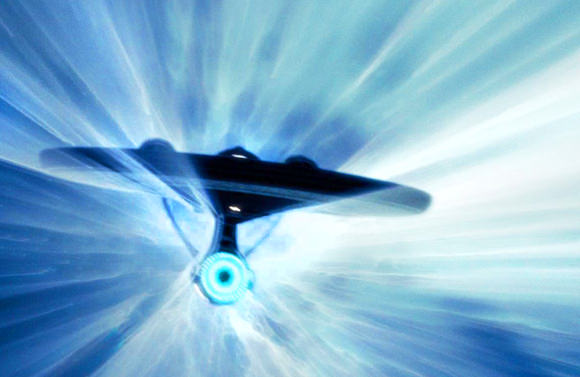The Alcubierre Warp Drive: On the Matter of Matter
I think I am over the yearly battering with Australian Research Council Discovery Grants with the grant now submitted. The release is matched with the acceptance of a paper from left-field, and so, to quote Monte Python, "And now for something completely different".
Last year, Brendan McMonigal was an honours student with me, and we took a look at the Alcubierre warp drive, a method to travel globally faster than the speed of light, while being quite happy with Einstein's General Theory of Relativity. This stuff often freaks people out, because they get special relativity beaten into them first, without realizing what this actually means in terms of general relativity.
Whatever other people think, I love General Relativity. What you can do with the universe is actually pretty cool.
So, the warp drive, in hand waving terms, travels at arbitrary speed by messing about with space-time. But what Brendan looked at it the question of what happens to all those particles and photons that get caught up in the warp bubble.
What he found is that as the warp drive sweeps through the universe and collects up all the particles, the ions and lone electrons, and microwave background photons, and whatever else is lying around.
And then when you slow down, they all get released in a burst, which will fry all of the people waiting to meet you. This is not good (not if Nanna has come all the way to meet you at the space port).
You can read more at universetoday, but if you are interested, check out the paper. Well done Brendan!
The Alcubierre Warp Drive: On the matter of matter
Brendan McMonigal, Geraint F. Lewis, Philip O'Byrne
Last year, Brendan McMonigal was an honours student with me, and we took a look at the Alcubierre warp drive, a method to travel globally faster than the speed of light, while being quite happy with Einstein's General Theory of Relativity. This stuff often freaks people out, because they get special relativity beaten into them first, without realizing what this actually means in terms of general relativity.
Whatever other people think, I love General Relativity. What you can do with the universe is actually pretty cool.
So, the warp drive, in hand waving terms, travels at arbitrary speed by messing about with space-time. But what Brendan looked at it the question of what happens to all those particles and photons that get caught up in the warp bubble.
What he found is that as the warp drive sweeps through the universe and collects up all the particles, the ions and lone electrons, and microwave background photons, and whatever else is lying around.
And then when you slow down, they all get released in a burst, which will fry all of the people waiting to meet you. This is not good (not if Nanna has come all the way to meet you at the space port).
You can read more at universetoday, but if you are interested, check out the paper. Well done Brendan!
The Alcubierre Warp Drive: On the matter of matter
Brendan McMonigal, Geraint F. Lewis, Philip O'Byrne
(Submitted on 26 Feb 2012)
The Alcubierre warp drive allows a spaceship to travel at an arbitrarily large global velocity by deforming the spacetime in a bubble around the spaceship. Little is known about the interactions between massive particles and the Alcubierre warp drive, or the effects of an accelerating or decelerating warp bubble. We examine geodesics representative of the paths of null and massive particles with a range of initial velocities from -c to c interacting with an Alcubierre warp bubble travelling at a range of globally subluminal and superluminal velocities on both constant and variable velocity paths. The key results for null particles match what would be expected of massive test particles as they approach +/- c. The increase in energy for massive and null particles is calculated in terms of v_s, the global ship velocity, and v_p, the initial velocity of the particle with respect to the rest frame of the origin/destination of the ship. Particles with positive v_p obtain extremely high energy and velocity and become "time locked" for the duration of their time in the bubble, experiencing very little proper time between entering and eventually leaving the bubble. When interacting with an accelerating bubble, any particles within the bubble at the time receive a velocity boost that increases or decreases the magnitude of their velocity if the particle is moving towards the front or rear of the bubble respectively. If the bubble is decelerating, the opposite effect is observed. Thus Eulerian matter is unaffected by bubble accelerations/decelerations. The magnitude of the velocity boosts scales with the magnitude of the bubble acceleration/deceleration.


Comments
Post a Comment